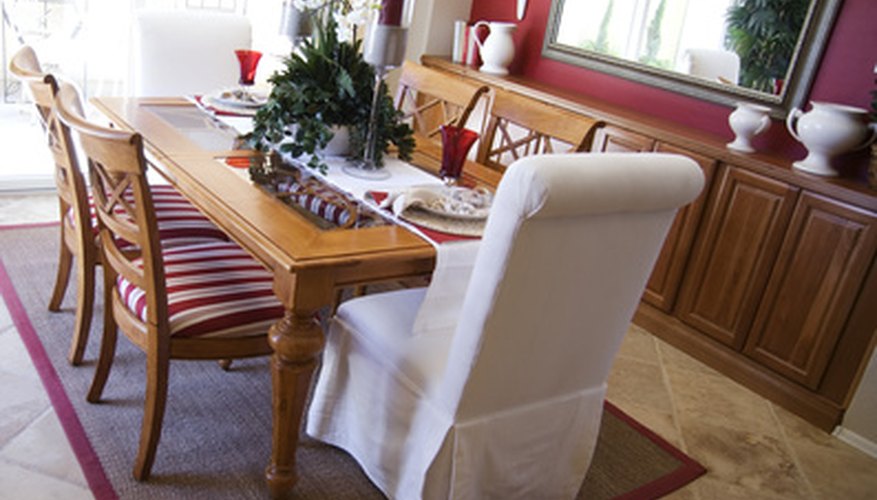Tableware may be categorised into four basic service types based on their function on the dinner table. The number, kind and quality of the main items and accessories used at meals vary depending on lifestyles and occasions. Whether they're used for ordinary days or special events, sit-down dinners or buffets, there are classes of tableware to suit each purpose.
Dinnerware
The plates, dishes and bowls arranged on the table for individual place settings are collectively called dinnerware. Also known as chinaware or crockery, these articles are usually made of ceramic. A soup bowl, a dinner plate and a small dessert plate may be enough for everyday use in an average household. For people with gracious living standards, a different set of dinnerware may be placed for each course. Fine china is laid out for bread, soup and salad. Other sets follow for several courses. At a formal dinner, there may be one ensemble each for hors d'oeuvres, entrée and main course. Yet another arrangement of cups and small plates is reserved for coffee or tea and dessert.
- The plates, dishes and bowls arranged on the table for individual place settings are collectively called dinnerware.
- Yet another arrangement of cups and small plates is reserved for coffee or tea and dessert.
Serving Ware
Serving ware are bigger or specialised items consisting of bowls, tureens, platters, gravy boats and other pieces. They hold larger portions of food from which to serve salads, soups, stews, casseroles, various courses and sauces. A serving spoon, ladle, pair of tongs or other utensils come with each serving dish. Containers for serving drinks, such as carafes and pitchers, are also classified as serving ware. There's also a tea service, a complete set by itself used at the end of the meal or to serve afternoon tea.
- Serving ware are bigger or specialised items consisting of bowls, tureens, platters, gravy boats and other pieces.
- A serving spoon, ladle, pair of tongs or other utensils come with each serving dish.
Silverware
The utensils or cutlery to eat and cut the food in bite-size pieces are made of silver or stainless steel. Also referred to as flatware, these implements consist of spoons, knives and forks. They vary slightly in size or in shape depending on use. For example, there are round spoons for soups, oval tablespoons and teaspoons, and dessert spoons. An elaborate setting may include a table knife, a butter knife and a steak knife. Several forks are presented for salads, main courses and desserts. At a formal dinner, the basic rule to remember in using silverware is to work your way from the outside to the inside as each course is served.
- The utensils or cutlery to eat and cut the food in bite-size pieces are made of silver or stainless steel.
- Several forks are presented for salads, main courses and desserts.
Glassware
Individual containers for drinking water, juice and wine are commonly made of glass and come in various styles and finishes. Formal occasions call for different kinds of stemware. The water goblet, red wine glass, white wine glass and tall glass for champagne or sparkling wine are distinguished by their respective shapes and positions on the table arrangement. By convention, glasses are clustered at the top right corner of each place setting -- water glass on the left, white wine glass on its right, and below it sits the red wine glass, above the tip of the knife.
- Individual containers for drinking water, juice and wine are commonly made of glass and come in various styles and finishes.
